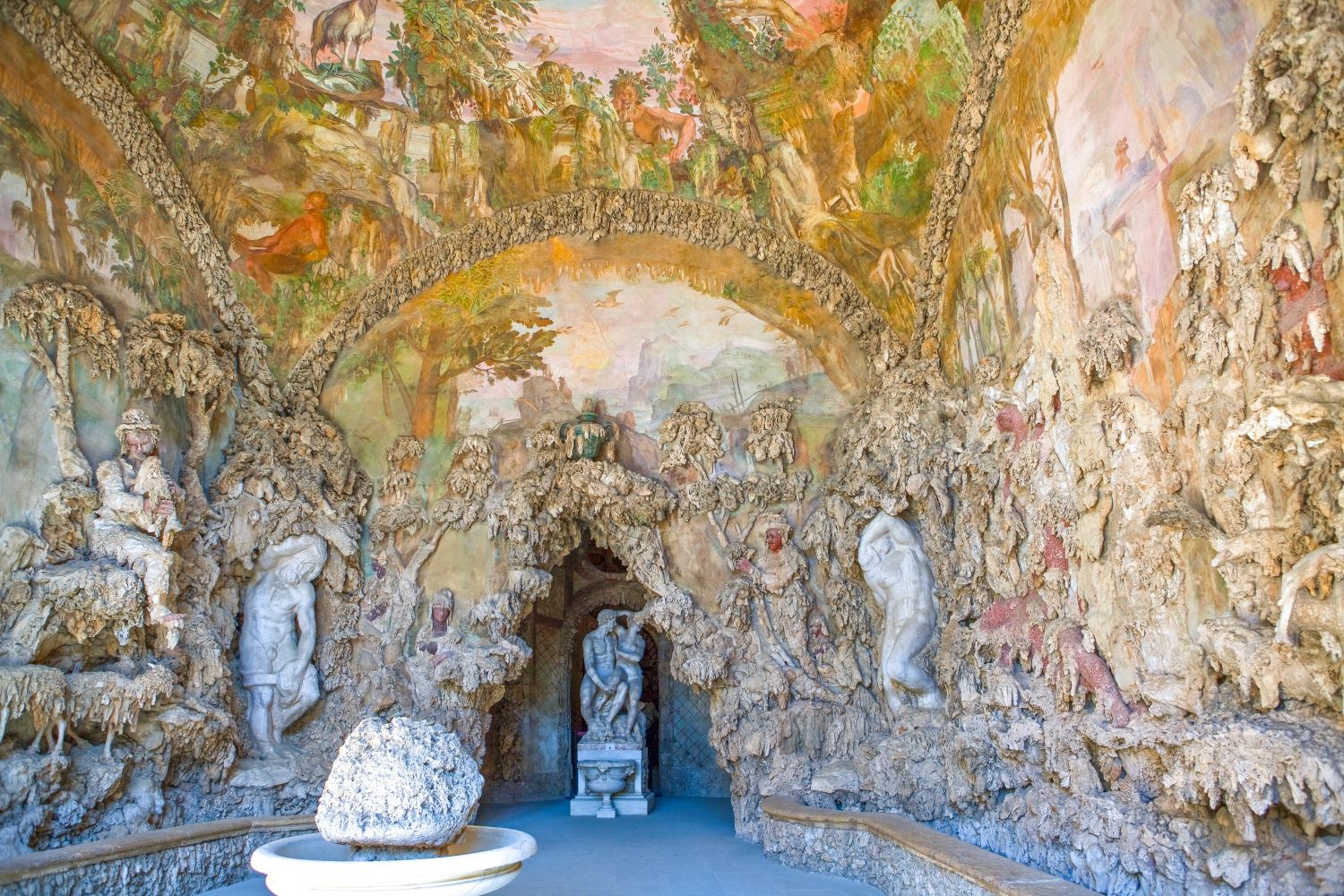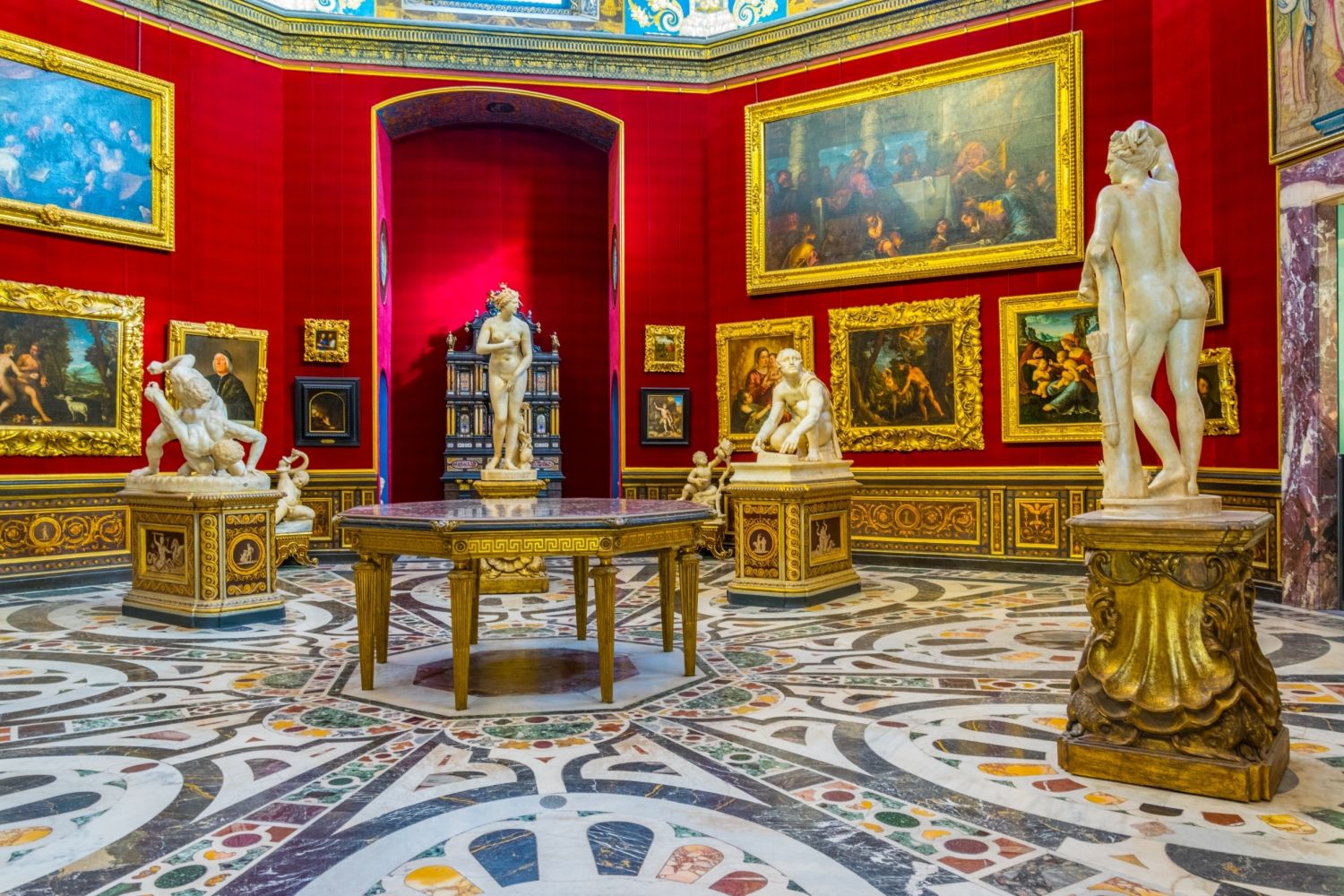
Pitti Palace and Boboli Gardens Tour
A day in court with the Medicis, the Lorraines and the kings of Italy..!
Explore










The pinnacle of the ancien regime fashion craze came to fruition with the pouf, initiated by Mary Antoinette. The pouf was a metal structure, roughly one metre tall, which, when placed on a woman’s head, merged her hair with that of a hairpiece, to create a towering hairdo. To lower the risk of visible headlice – their scalps were never washed, and the hair’s protective oils would go rancid, if the woman wore the pouf for long periods of time..! – hairdressers would attach a small container of honey to the inside of the structure to attract the lice. Florence is home to many different artworks depicting the women of this time with an understated pouf, such as can be seen in the portrait of the Martelli family by Giovan Battista Benigni (c.1780), in the Martelli Palace. The pouf could also be decorated with precious stones and jewels, small family portraits, flowers, plants, fruit, animal figurines, embalmed birds, and little ships in full sail…!
The French Revolution brought about a significant gap between Rococo and Neoclassical fashion (see this article's header picture, the portrait of Countess Elena Mastiani Brunacci, depicted by Pietro Benvenuti in 1809, in the Gallery of Modern Art in Florence). Already by 1748, the discoveries of Pompeii and Herculaneum had sparked a revival in what was then believed to be ancient Greek and Roman fashion. The dresses and wigs of the previous era were cast aside, as symbols of the widely-hated aristocracy. Women began to dress in a manner that closely resembled Classical statues. The Imperial-style dress was thus born, made from extremely fine cotton – this was considered to be more “ethical” than the clothing worn during the ancien regime, which entailed a colossal financial waste in very expensive fabrics. White materials were required for these new dresses, since people were unaware that many ancient statues were actually multicoloured..!
No more corsets, metal structures, or any of the other paraphernalia that, until then, made women’s dresses moral status symbols: the stiffness of these dresses, along with the tightness of the bust, was widely accepted to represent discipline and moral stature: in the same way, a light, loosely-fitting dress was seen to reflect the debauchery of the woman who owned it. For a short period of time, particularly following the French Revolution, aesthetic and ethical values were thrown into question. A woman’s waist was yanked up underneath her breast, with the neckline pulled dramatically down; the corset, which had previously been discarded, was reintroduced and made so much lighter that it almost displayed the woman’s nipples. The balloon sleeves allowed almost the whole arm to be shown, for the first time ever. The craze for white, transparent dresses, sometimes worn over tight-fitting, flesh-coloured pantyhose, carried on until many women began to die from lung conditions: fashion icons such as Juliette Récamier, Thérésa Tallien and Fortunée Hamelin started to bathe themselves or oil themselves with their dresses still on, so the fabric would stick to their skin…! The only acceptable outerwear was a soft, Indian cashmere shawl – these were incredibly expensive – such as worn by our beloved Elena. Hair was worn bound up, to echo Greek or Roman styles, or cut as short as those sentenced to be beheaded!
In Florence, you can admire these dresses at the Museum of Costume and Fashion, where these articles are on display only during certain rotations. Teresa Pichler Monti wore a dress of this style, as depicted by Carlo Labruzzi (this work can be found in Florence’s Gallery of Modern Art), as did the Countess of Chinchón, painted by Francisco Goya y Lucientes (c.1798, found in the Uffizi Gallery: see this article's picture). These dresses were worn with leather sandals or soft ballerina slippers, which allowed the women to “glide” down the corridors like goddesses (have you considered touring the Salvatore Ferragamo Museum alongside me..?); “cammei” then came back into fashion, as you can see by the belt worn by Angelika Kauffmann in her self-portrait, completed in 1787 and stored in Florence’s Vasarian Corridor..!
Martedì 04 agosto 2020
